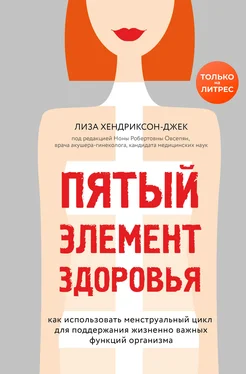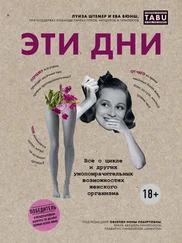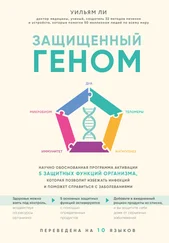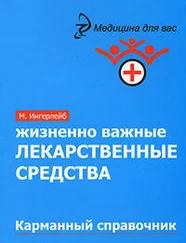4. National Heart Lung and Blood Institute. “Electrocardiogram.” Accessed October 26, 2017.www.nhlbi.nih.gov/health/health-topics/topics/ekg.
5. Depares, J., R.E. Ryder, S.M. Walker, M.F. Scanlon, and C.M. Norman. “Ovarian ultrasonography highlights precision of symptoms of ovulation as markers of ovulation.” British Medical Journal (Clinical Research Ed.) 292, no. 6535 (1986): 1562.
6. Fehring, Richard J., Mary Schneider, and Kathleen Raviele. “Variability in the phases of the menstrual cycle.” Journal of Obstetric, Gynecologic, & Neonatal Nursing 35, no. 3 (2006): 376–384.
7. Stein, I.R., and Melvin R. Cohen. “Sperm survival at estimated ovulation time: prognostic significance.” Fertility and Sterility 1, no. 2 (1950): 169–75; Ahlgren, Mats. “Sperm transport to and survival in the human fallopian tube.” Gynecologic and Obstetric Investigation 6, no. 3–4 (1975): 206–214.
8. Frank-Herrmann, Petra, J. Heil, C. Gnoth, E. Toledo, S. Baur, C. Pyper, E. Jenetzky, T. Strowitzki, and G. Freundl. “The effectiveness of a fertility awareness based method to avoid pregnancy in relation to a couples’ sexual behaviour during the fertile time: a prospective longitudinal study.” Human Reproduction 22, no. 5 (2007).
9. Andrist, Linda C., Raquel D. Arias, Deborah Nucatola, Andrew M. Kaunitz, B. Lynn Musselman, Suzanne Reiter, Jennifer Boulanger, Linda Dominguez, and Steven Emmert. “Women’s and providers’ attitudes toward menstrual suppression with extended use of oral contraceptives.” Contraception 70, no. 5 (2004): 359–363; Coutinho, E.M., and S.J. Segal. (1999). Is Menstruation Obsolete? Oxford University Press.
10. Steinem, Gloria. “If Men Could Menstruate.” Accessed September 10, 2017. ww3.haverford.edu/psychology/ddavis/p109g/steinem.menstruate.html
11. Lin, Valerie Chun-Ling, Rongxian Jin, Puay-Hoon Tan, Swee-Eng Aw, Chow-Thai Woon, and Boon-Huat Bay. “Progesterone induces cellular differentiation in MDA-MB-231 breast cancer cells transfected with progesterone receptor complementary DNA.” The American Journal of Pathology 162, no. 6 (2003): 1781–1787.
12. Ali, Simak, and R. Charles Coombes. “Estrogen receptor alpha in human breast cancer: occurrence and significance.” Journal of Mammary Gland Biology and Neoplasia 5, no. 3 (2000): 271–281.
13. Mohammed, Hisham, I. Alasdair Russell, Rory Stark, Oscar M. Rueda, Theresa E. Hickey, Gerard A. Tarulli, Aurelien A. Serandour et al. “Progesterone receptor modulates ERα action in breast cancer.” Nature 523, no. 7560 (2015): 313; Lange, Carol A., Jennifer K. Richer, and Kathryn B. Horwitz. “Hypothesis: progesterone primes breast cancer cells for cross-talk with proliferative or antiproliferative signals.” Molecular Endocrinology 13, no. 6 (1999): 829–836; Chang, King-Jen, Tigris T.Y. Lee, Gustavo Linares-Cruz, Sabine Fournier, and Bruno de Ligniéres. “Influences of percutaneous administration of estradiol and progesterone on human breast epithelial cell cycle in vivo.” Fertility and Sterility 63, no. 4 (1995): 785–791.
14. Kumar, Nirmala S., Jennifer Richer, Gareth Owen, Elizabeth Litman, Kathryn B. Horwitz, and Kimberly K. Leslie. “Selective down-regulation of progesterone receptor isoform B in poorly differentiated human endometrial cancer cells: implications for unopposed estrogen action.” Cancer Research 58, no. 9 (1998): 1860–1865.
15. Dumesic, Daniel A., and Rogerio A. Lobo. “Cancer risk and PCOS.” Steroids 78, no. 8 (2013): 782–785.
16. Haoula, Zeina, Maisa Salman, and William Atiomo. “Evaluating the association between endometrial cancer and polycystic ovary syndrome.” Human Reproduction 27, no. 5 (2012): 1327–1331; Chittenden, B.G., G. Fullerton, A. Maheshwari, and S. Bhattacharya. “Polycystic ovary syndrome and the risk of gynaecological cancer: a systematic review.” Reproductive Biomedicine Online 19, no. 3 (2009): 398–405.
17. Clavel-Chapelon, Françoise. “Cumulative number of menstrual cycles and breast cancer risk: results from the E3N cohort study of French women.” Cancer Causes & Control 13, no. 9 (2002): 831–838.
18. Chang, King-Jen, Tigris T.Y. Lee, Gustavo Linares-Cruz, Sabine Fournier and Bruno de Ligniéres. “Influences of percutaneous administration of estradiol and progesterone on human breast epithelial cell cycle in vivo.” Fertility and Sterility 63, no. 4 (1995): 785–791; Prior, Jerilynn C. “Preventive Powers of Ovulation and Progesterone: Ovulation and Breast Health.” Accessed January 8, 2017. www.cemcor.ca/files/uploads/6_Ovulation_and_Breast_Health.pdf
19. Whelan, Elizabeth A., Dale P. Sandler, Jan L. Root, Ken R. Smith, and Clarice R. Weinberg. “Menstrual cycle patterns and risk of breast cancer.” American Journal of Epidemiology 140, no. 12 (1994): 1081–1090.
20. Seifert-Klauss, Vanadin, and Jerilynn C. Prior. “Progesterone and bone: actions promoting bone health in women.” Journal of Osteoporosis (2010): 1–18.
21. Hergenroeder, Albert C. “Bone mineralization, hypothalamic amenorrhea, and sex steroid therapy in female adolescents and young adults.” The Journal of Pediatrics 126, no. 5 (1995): 683–689; Cann, Christopher E., Mary C. Martin, Harry K. Genant, and Robert B. Jaffe. “Decreased spinal mineral content in amenorrheic women.” JAMA 251, no. 5 (1984): 626–629; Chou, Sharon H., and Christos Mantzoros. “Bone metabolism in anorexia nervosa and hypothalamic amenorrhea.” Metabolism 80 (2018): 91–104.
22. Hart, Roger, and Dorota A. Doherty. “The potential implications of a PCOS diagnosis on a woman’s long-term health using data linkage.” The Journal of Clinical Endocrinology & Metabolism 100, no. 3 (2015): 911–919; Orio Jr., Francesco, Stefano Palomba, Letizia Spinelli, Teresa Cascella, Libuse Tauchmanovà, Fulvio Zullo, Gaetano Lombardi, and Annamaria Colao. “The cardiovascular risk of young women with polycystic ovary syndrome: an observational, analytical, prospective case-control study.” The Journal of Clinical Endocrinology & Metabolism 89, no. 8 (2004): 3696–3701.
23. Cheng, Wanli, Ontario D. Lau, and Nada A. Abumrad. “Two antiatherogenic effects of progesterone on human macrophages; inhibition of cholesteryl ester synthesis and block of its enhancement by glucocorticoids.” The Journal of Clinical Endocrinology & Metabolism 84, no. 1 (1999): 265–271; Prior, Jerilynn C. “Progesterone within ovulatory menstrual cycles needed for cardiovascular protection: an evidence-based hypothesis.” Journal of Restorative Medicine 3, no. 1 (2014): 85–103.
1. Groothuis, P.G., H.H.N.M. Dassen, A. Romano and C. Punyadeera. “Estrogen and the endometrium: lessons learned from gene expression profiling in rodents and human.” Human Reproduction Update 13, no. 4 (2007): 405–417.
2. Kumar, Nirmala S., Jennifer Richer, Gareth Owen, Elizabeth Litman, Kathryn B. Horwitz, and Kimberly K. Leslie. “Selective down-regulation of progesterone receptor isoform B in poorly differentiated human endometrial cancer cells: implications for unopposed estrogen action.” Cancer Research 58, no. 9 (1998): 1860–1865.
3. Hilgers, Thomas W. (2010). The NaPro Technology Revolution: Unleashing the Power in a Woman’s Cycle. New York, NY: Beaufort Books, 331–335.
4. Там же, 332; Fehring, Richard J., Mary Schneider, and Kathleen Raviele. “Variability in the phases of the menstrual cycle.” Journal of Obstetric, Gynecologic, & Neonatal Nursing 35, no. 3 (2006): 376–377.
5. Fehring, Richard J., Mary Schneider, and Kathleen Raviele. “Variability in the phases of the menstrual cycle.” Journal of Obstetric, Gynecologic, & Neonatal Nursing 35, no. 3 (2006): 376–377.
6. Guttorm, Eigil. “Menstrual bleeding with intrauterine contraceptive devices.” Acta Obstetricia et Gynecologica Scandinavica 50, no. 1 (1971): 9–16; Dasharathy, Sonya S., Sunni L. Mumford, Anna Z. Pollack, Neil J. Perkins, Donald R. Mattison, Jean Wactawski-Wende, and Enrique F. Schisterman. “Menstrual bleeding patterns among regularly menstruating women.” American Journal of Epidemiology 175, no. 6 (2012): 536–545; Livingstone, Mark, and Ian S. Fraser. “Mechanisms of abnormal uterine bleeding.” Human Reproduction Update 8, no. 1 (2002): 60–67.
Читать дальше
Конец ознакомительного отрывка
Купить книгу












